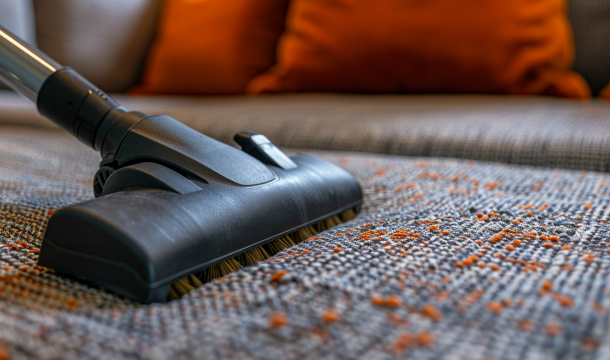When to Call an Exterminator for Mice?
Barring instances of keeping mice as pets, homeowners generally detest spotting mice in their homes. Remember that when you spot one mouse, chances are many others are lurking in hiding holes around the house. So, when does a mouse infestation become an issue? Do you need to contact an exterminator?
Herein, we’ll delve into when you should call an exterminator to deal with a mouse infestation and why it’s essential to deal with the infestation problem quickly.
Signs You Might Need Mice Control Services
Many homeowners elect to lay traps as the go-to solution when they spot a mouse in their kitchen and garages. This can be an effective way to deal with a solitary incursion case. However, mice traps are only effective when dealing with occasional incursions, and no mice live in your home.
If you’re dealing with an infestation characterized by mice building a nest inside or outside your home, you need the input of professional exterminators.
Here are some of the signs you have a infestation that is serious enough to call in a professional mouse exterminator:
- Multiple mice sightings over time. Additionally, you might notice your pet catching mice regularly.
- You notice mouse droppings. The droppings look like small, tiny pellets. Typically, fresh mouse droppings have a dark tinge, while older droppings turn gray over time. It’s important to note that mouse droppings can be very unhealthy to have in your home, especially in your bedrooms and kitchen.
- An enduring urine odor. Mouse urine and feces have a characteristic pungent smell that builds up as the mice continue to soil around their nest. If the nest is nearby, you’ll notice a pungent smell.
- Gnaw marks on random items. Mice gnaw on anything from old cardboard and wires to drywall. Their gnawing behavior is particularly prevalent when they’re building their nest. They also gnaw through food packaging to access food. For instance, they will easily gnaw through bags and boxes to get to the food, leaving food leaking from their package.
- Signs of mice nest. Mice can build their nest using anything around your home, from torn insulation to scrap newspapers. Moreover, they can build their nest anywhere, including attics, closets, ductwork, crawlspaces, furniture, and wall voids.
What Do Mice Eat in Your House?
The nature of mice is to eat anything they find in the house. They will nibble on your leftover crumbs, pet food, spilled cereal, fruits, berries, plants in your domestic garden, grains, and much more. They tend to prefer high carbohydrate foods but will comfortably eat high protein foods, including meat, whether leftover or raw stored meat.
With this in mind, you should always keep your pantry and eating areas clean, ensure all trash is covered and protected, and store snacks, cereals, grains, and cooking and baking supplies in secure bins that mice cannot chew through.
Finally, do not routinely leave pet foods, nuts, and fruits out in the open, as they may attract mice.
Are Mice Dangerous in Your House?
In a nutshell, yes! Mice can be a threat to humans and pets. Some of the ways mice pose a danger include:
Rabies Risk: Some are infected with mice. Through their bites, they can infect pets or even humans.
Ticks and Fleas Risk: It is common for mice to carry fleas and ticks, which they spread around your home as they move around. These critters pose a huge health risk as they carry diseases.
Electrical Fault Risk: Mice are known to gnaw on electrical wiring, appliance cables, and other electrical-related items, resulting in electrical faults and shorted connections. They can also cause electrical fires.
Common Types of Mice in Toronto
Identifying the type of mouse infesting your house can help in their eradication. The Mus musculus is one of the most common types of mice in Toronto. It is easy to identify as it has a brown hued fur. It is also small, measuring 3 to 3.5 inches long (minus the tail). However, if the critter looks like a mouse, it is a mouse, even if it does not have these characteristics.
On the other hand, rats tend to be much larger with dark-colored fur. They also tend to be more active and noisier when they infest your home.
How Do Mice Get Inside Your House?
The size of most types of mice allows them to squeeze through astonishingly small holes, cracks, and gaps around your home. Some of the common entry points for mice include unsealed holes for wiring and plumbing, gaps in insulation, unprotected vents in the attic and basement, and an open door.
An experienced exterminator will help you identify the most probable entry points where mice would gain entry to your home to prevent future infestations. That said, general house maintenance can help thwart mouse infestations. Inspect your vents, insulation, and other connections leading into your home.
Mice is good at finding even the small cracks and holes that may occur due to normal wear and tear. For a thorough inspection to identify all the necessary repairs, consider hiring a pest exterminator to conduct an in-depth check-up of your home – call Pest Solution Services at +1 (416) 451 7659
Final Note
Don’t turn a blind eye to a mouse infestation. If you notice signs of mice repeatedly, you should take steps to exterminate the pests. Contact Pest Solution Services, the go-to professional mice exterminator in Toronto and its environs.
We’re here to help you deal with these critters expeditiously!


